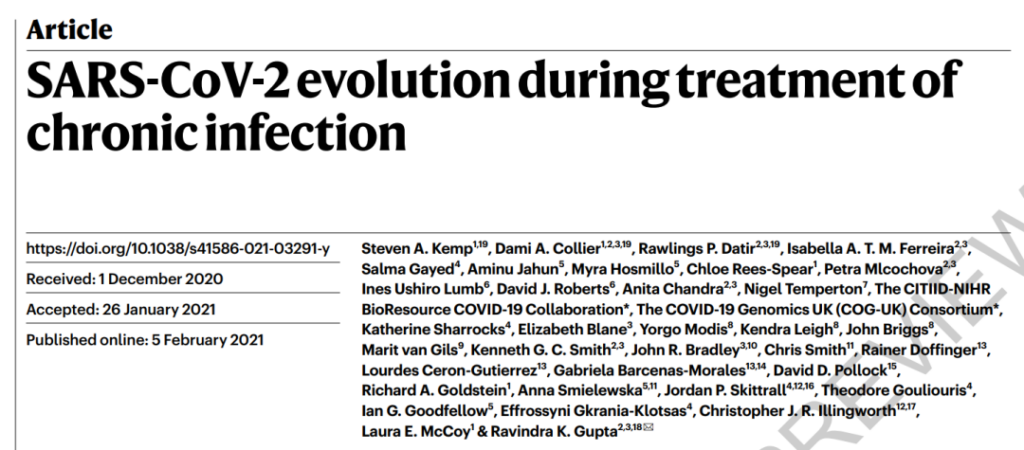Nature: The new coronavirus has evolved in a single patient
- Normal Liver Cells Found to Promote Cancer Metastasis to the Liver
- Nearly 80% Complete Remission: Breakthrough in ADC Anti-Tumor Treatment
- Vaccination Against Common Diseases May Prevent Dementia!
- New Alzheimer’s Disease (AD) Diagnosis and Staging Criteria
- Breakthrough in Alzheimer’s Disease: New Nasal Spray Halts Cognitive Decline by Targeting Toxic Protein
- Can the Tap Water at the Paris Olympics be Drunk Directly?
Nature: The new coronavirus has evolved in a single patient
Nature: The new coronavirus has evolved in a single patient. The research team believes that the repeated increase in the frequency of this virus population after plasma treatment may mean that these mutations have brought a selective advantage.
On February 5, 2021, Nature published a case study titled “SARS-CoV-2 evolution during treatment of chronic infection”.
An immunosuppressed patient developed different variants of the new coronavirus while receiving convalescent plasma therapy. After receiving plasma treatment, the dominant COVID-19 variant contained a deletion mutation on the variant B.1.1.7 found in the UK.
The results of the study suggest a possibility that when immunosuppressed patients experience long-term viral replication, the new coronavirus in their bodies may evolve.

In this study, the research team described a case study of an immunosuppressed male patient in his seventies who was infected with the new coronavirus (SARS-CoV-2) and had received chemotherapy for lymphoma. This patient was admitted to the hospital in the summer of 2020 and received antibiotics, steroids, several courses of remdesivir and convalescent plasma therapy for 101 days, but none of them worked.
The research team collected virus samples at 23 different treatment time points. The SARS-CoV-2 variant that caused the infection belongs to lineage 20B and carries the D614G point mutation on the spike protein.
After the first two rounds of convalescent plasma treatment, that is, between the 66th day and the 82nd day, changes in the virus population were observed. They found that the proportion of a mutant strain began to increase, and two mutations appeared on the spike protein of this mutant strain: one was a deletion mutation at position 69/70 (appearing in the British mutant B.1.1.7), and another Mutations that cause D796H substitution. This population reappeared after the third round of remdesivir (day 93) and recovery plasma (day 95).
The research team believes that the repeated increase in the frequency of this virus population after plasma treatment may mean that these mutations have brought a selective advantage. But the author concluded that the emergence of this mutant strain is not the main reason for treatment failure.
The research team emphasized that this is only a single case study, so only limited extrapolation of the results. However, the results of the study may remind people to be wary of using convalescent plasma to treat new coronavirus infections in immunosuppressed patients.
(source:internet, reference only)
Disclaimer of medicaltrend.org



